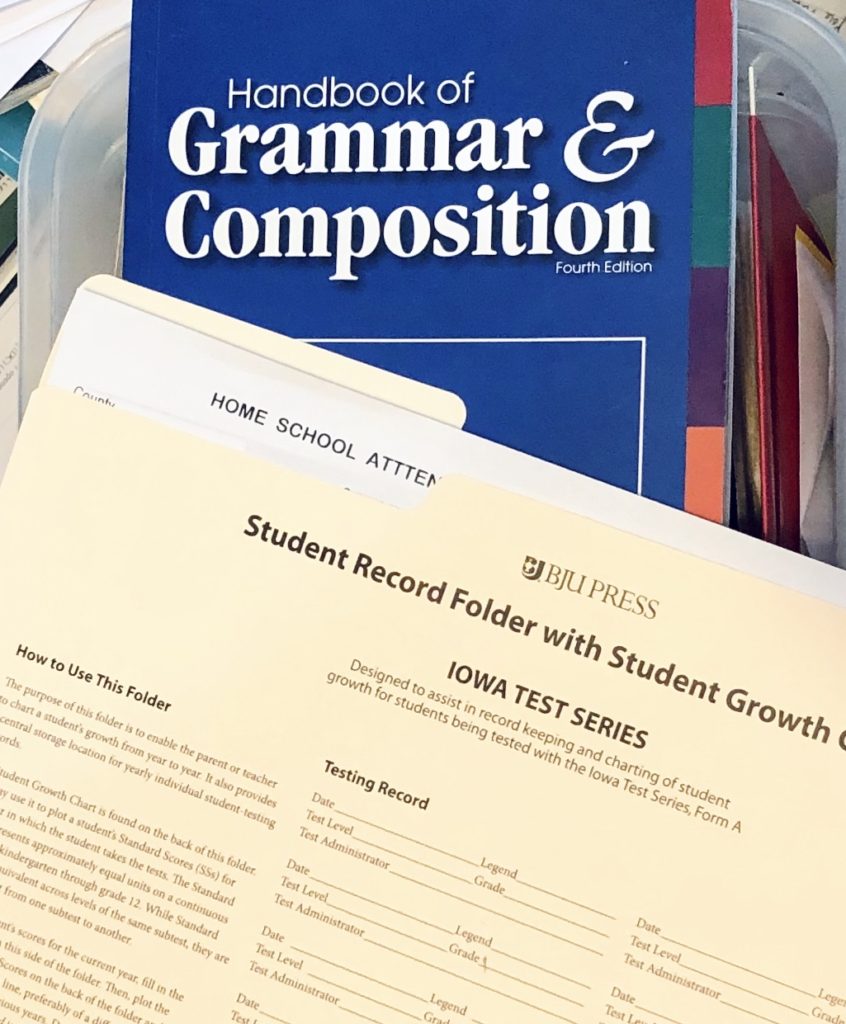
If You Choose Homeschooling: Step 2 – Believe
In my last post: 3 Helpful Steps If You Choose Homeschooling, we addressed step one–admit. Once we got admitting our fears out of the way, then, we were free to admit our excitement!
Now, we’re ready to take the second step and believe.
There’s nothing magical about homeschooling. There’s no secret formula for producing national spelling bee champions or full-ride scholarships to universities.
However, you can believe, within God’s will and power, nothing is impossible for your homeschooling journey.
Think of homeschooling as an expedition to explore with your children to greater depths–not only academics, but also who they are, and their purpose in this world.
Believe in Your Child’s Potential
Usually, parents see the potential in their children before others do.
Even so, kids often take their time revealing their capabilities. They may excel in one area and struggle greatly in another.
If you’re wondering where to begin in homeschooling, start with what you know, and believe in your child’s potential.
Gather the Baseline Data
My daughters attended public school before we homeschooled. One completed kindergarten. The other completed second grade. After registering with my state’s Department of Non-Public Education, I then went to the school to withdraw the girls. After expressing my appreciation for all the good things the school had done, I politely asked for a copy of my girls’ transcripts.
I thought the transcripts would be beneficial to have for reenrollment; in case the homeschooling gig didn’t pan out. Plus, I thought the transcripts might help me know where to begin in teaching them. The transcripts haven’t left the folder where I first filed them years ago.
In the beginning, my thought process about lesson planning revolved around the idea that eventually, I’d enroll my kids back into the public school system.
So initially, to keep my girls “on track” for reentry, I searched the internet for my state’s standard course of study for each grade. Then, I planned accordingly.
But, we fell in love with homeschooling! Even after I realized we would be in it for the long haul, I still periodically check the national standards, because I’m curious about what other students are studying.
Much of the basic concepts (especially in English and math) are similar to what’s presented in homeschool curriculums. The difference in curriculums are how the material is presented, and the pace.
You may have access to your children’s end-of-grade test scores. These might be helpful to determine what they have mastered and what areas need more work.
Or, test scores may not accurately reveal what they have learned. Sometimes scores just reveal how people “choke” when stressing over a test!
Make an Assessment
I remember not testing well on several exams in school because I spent too much time agonizing over the possible trick questions. I thought they all were trick questions!
Even though I eventually graduated with honors, the stress affected my opinion on the value of testing.
Rarely, did I test my homeschooled children before middle school. And then, it was gradually incorporated only because I knew the world requires it—for college admission, for employment, and for advancement.
Don’t get me wrong, I believe in assessment. But there are multiple ways to evaluate someone’s knowledge and capabilities.
Nonetheless, if you’re thinking your third grader might need to back up a grade in reading, but you’re not sure; give them an assessment test. These can be found online. Many curriculum websites offer them for free.
Help your students relax by telling them the test is only to see where learning needs to begin in order for them to be successful. Encourage them to do their best. Remind them about one of the cool things about homeschooling: no matter where they begin, the learning environment is set up just for them. Every learner progresses differently. Homeschooling provides them the ability to succeed at their own pace, without the pressure of comparison to their peers.
When the unnecessary test-stress is removed, you may be surprised. Your children may test higher than they ever have before.

Trust They’re in the Right Place
On the other hand, your child may score lower on an assessment than what you expected. Don’t panic. The blessing is now you know where a possible gap in learning has occurred. You’re now aware of the areas where they need more practice. Homeschooling provides plenty of time to master concepts before moving forward.
It’s not unusual for a homeschooler to work on multiple grade levels. Your 4th grader may be on level in every subject, except she’s on 3rd grade level reading and 2nd grade level in spelling.
Don’t allow anyone to harp on where they “should be.” It saddens me every time students hang their heads and tell me, “I should be in (that) grade, but I’m in (this) grade.” I tell them they are in the right place as long as they are learning and making progress.
The only time a child should feel out of place, is if he graduates with his same-age peers, but finds himself floundering in life due to consistent chinks in his character or hurried bypasses in his education.
Only God, through His wisdom and power, knows a person’s full potential. Let’s model for our kids how to persevere doing our part, giving our best, in addition to showing them how we trust God to bring His plan for each of us to fruition.
At times, I have had a child complain about a subject they’re learning, like algebra, stating they’ll never use it in life. I simply tell them they may be right, but because we don’t know for certain what God has in mind for them ten – twenty years from now, and because currently the subject is required for high school graduation, then we will press on to the best of our ability. Plus, we’ll try to find a curriculum to make that as painless as possible!
Choose Homeschooling Curriculum
Homeschooling curriculum is not chosen haphazardly or selected solely on popularity. Consider curriculum best suited for your child’s learning style. There is a vast variety available. You can even choose curriculum from the same companies who produce products for your child’s former school.
However, you may not want to aim at not doing things exactly like the old school. Because of my past training and working as a public school teacher, it took me a while to let go of certain habits and expectations.
Once, I realized the blessing of tailoring the curriculum to my children’s unique needs and learning styles, our homeschooling became more enjoyable.
Ask other homeschool parents what curriculum they use and why they like it. Ask their kids their thoughts about it.
Check out homeschool groups and forums online. Research websites. If you’re unsure of where to find these online resources, just contact me and I’ll send you a list. Or check some of my other posts under the “homeschooling” category.
Go to homeschool conferences. This gives you a chance to get your hands on the curriculum and review it before purchasing.
At one homeschool conference, I remember looking at different math books. Mostly, they all covered the same concepts, but some had a full page of problems while others were broken up with illustrations and white space.
Knowing my math-challenged child would freak out if she saw a full page of problems and text, I chose to purchase one with colorful illustrations. It didn’t make her fall in love with math, but it did help her attitude. She was very appreciative and less stressed.
Some homeschoolers will buy new curriculum but not write in the books so they can resell them for a good price. To save paper, some students use clear page protector sheets to place over the book’s page and write on that with a wipe-off marker.
My personal preference over the years has been to buy used curriculum whenever I can. That way, after we’ve tried it for a while, if it doesn’t seem like a good fit, there’s not been a huge financial investment.
Also, we’ve been blessed by friends who have loaned us curriculum to use.
Include your children in the decision-making. If they’re not able to help choose curriculum, then allow them the fun of choosing other school supplies. Make their first day of school special.
The first year of homeschooling may be the most challenging because it is a year of learning what works and what doesn’t. It’s a continual tweaking process but at least you have the freedom to try new products and teaching techniques.

Create Space for Homeschooling
Will you create a special space for homeschooling?
Organizing school books, papers, and materials is always beneficial to everyone. Just like there are different kinds of learners, so too, are there teachers. Some like to color-coding and cross-referencing everything while others are comfortable with a simple Rubbermaid tub with a masking tape label. Find what works for you and what makes sense in your home.
If room is available, some homeschoolers enjoy working from individual desks. Others may not.
We have Bible and read-aloud time in the den. Math and science at the kitchen table. Silent reading usually takes place on a bed or in a recliner.
When my kids were little, we made learning tents – inside and out. We put pillows in the bathtub for reading. If you can make learning fun, do it.
Homeschooling actually stretches far beyond the home.
Years ago, when I left teaching in the public school system, field trips were drastically reducing due to the traveling costs. Now, COVID-19 may have an even greater effect on field trips. They all may be virtual for awhile.
But they don’t have to be for homeschoolers, who can travel in much smaller groups, and at less congested times.
But also keep in mind, to create margin in your life. Because homeschooling typically takes less time than the normal 8:00 – 3:00 school day, it’s easy to add lots of good things. More field trips, more sports, more play groups, more activities.
All of those may be good things, but not always the best for our families. Carve out time to be still, to ponder, and to connect with our Creator in quiet moments. This may be the most challenging, yet one of the most valuable things you model for the next generation.
Imagine & Plan Your Homeschool Days
Imagine how you want your homeschool days to look. Smiling, appreciative kids who are eager to learn every morning? Okay, maybe you should be a little more realistic. Some days will be like that—maybe even most days. But don’t expect an ideal day every day!
If you try to make every learning moment thrilling, you’ll quickly burn out. Make learning fun, but pace yourself.
Nurturing a love for learning is the key. Structure is important. Flexibility is essential.
Keeping flexibltity in mind, begin each day with a plan. What has worked for me is preparing a lesson plan notebook for each of my children. You can use a regular notebook or you can easily order one online.
Cover the basics—reading, writing, and arithmetic. But also plan activities that incorporate serving others, exploring their own interests and hobbies. Remember not to over pack your days.
When I taught public school kindergarten I was instructed to change subjects every twenty minutes. We had to do it that way in order to accomplish the requirements for the day. But every child’s attention span varies depending on his interest and capabilities.
To begin with, you could plan changing subjects every 20 -30 minutes. Then, tweak it. Eventually, I did away with time scheduling subjects. We simply covered a lesson in whatever time allotments we needed.
Depending on your child, you may enjoy introducing a subject and then allowing your child to finish the assignment on his own. On the other hand, your child may need guidance throughout the entire lesson until its completion. Every child is unique.
The key is to begin with a level where your child is comfortable and finds success. Then, gradually stretch his learning and move forward.
Believe in the Process
Be your child’s greatest cheerleader but also hold them accountable. In addition to book knowledge, also set goals for learning self-discipline, perseverance, and a good work ethic. Raise an encourager and a problem-solver.
Just as your students had good days and bad days in the public school, so too will they have those if you choose homeschooling. When the kids are frustrated with math, or acting out inappropriately, or Mom is stressed, just take a time out. Breathe.
Believe in the process. Which I believe is called sanctification! Homeschooling is not a formula for producing a perfect education, a perfect home, or perfect children. However, it does provide numerous opportunities for us to see our need for Christ.
The challenges of homeschooling are real. But, the rewards are worthy of pursuing. Press on, and believe.
What are your thoughts about homeschooling? Do you have any questions?




